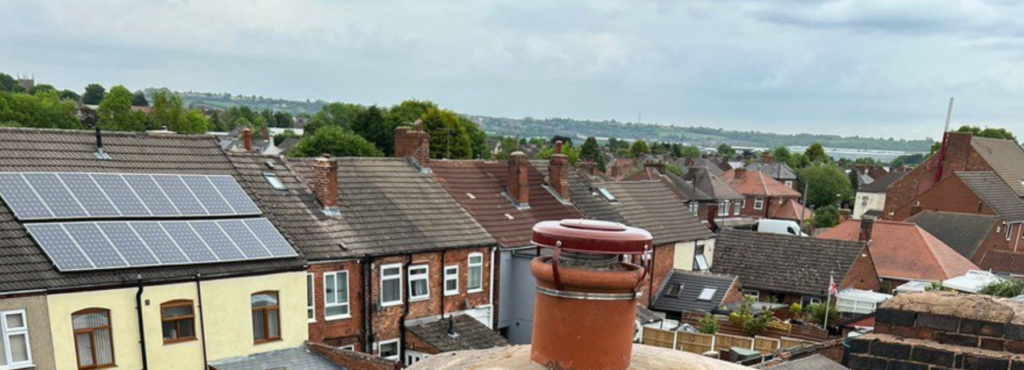When planning the construction or renovation of a larger property, choosing the right roof style is critical not only for aesthetics but also for long-term performance. Among the various pitched roof types available, hip roofs stand out as the ideal solution for enhancing stability—particularly on wider and more expansive buildings.
At LS Roofing Marlow, we’ve worked on numerous large residential and commercial projects across Marlow, Buckinghamshire, where hip roofs have proven their worth in both structure and style. In this article, we explore why hip roofs are particularly well-suited to larger properties, and how they contribute to durability, wind resistance, and a cohesive architectural finish.
What Is a Hip Roof?
A hip roof is a pitched roof where all sides slope downwards towards the walls, usually at a gentle angle. Unlike a gable roof, which has flat ends, a hip roof has four sloping faces that meet at a ridge or a central point.
Key characteristics:
- Four sloped surfaces for balanced load distribution
- No vertical ends or gable walls
- Can be built in various styles such as simple hip, cross-hipped, or pyramid hip
This all-around sloping design plays a major role in why hip roofs are favoured for wider, more complex buildings.
Why Hip Roofs Excel on Larger Properties
1. Enhanced Structural Stability
One of the standout benefits of a hip roof is its inherent stability. With all sides sloping down to the walls, the weight of the roof is evenly distributed across the entire structure—an important factor when covering a large surface area.
Stability advantages:
- Reduces pressure on any single wall or support beam
- Creates a naturally self-bracing shape
- Ideal for buildings with wide spans or multiple storeys
- More resistant to sagging or uneven load settlement over time
This stability is especially valuable in larger properties that rely on consistent structural integrity over wider dimensions.
2. Superior Wind Resistance
In exposed locations, wind uplift is a serious concern—especially for homes set in open countryside or on elevated plots. The aerodynamic shape of a hip roof helps deflect strong winds rather than absorbing their full force.
Wind-resistance features:
- Fewer flat surfaces for wind to catch
- Sloped design directs wind pressure downwards
- Reduces risk of roof damage or tile displacement in storms
This makes hip roofs a preferred choice for large properties in areas like Marlow, Buckinghamshire, where storm conditions are becoming increasingly common.
3. Support for Complex Floorplans
Larger homes often feature L-shaped, T-shaped, or irregular footprints. Hip roofs can be adapted to these layouts with ease, maintaining their stability while covering multiple wings or sections.
Design benefits:
- Works well with cross-hipped configurations
- Offers consistent pitch and coverage for multi-wing properties
- Compatible with dormers and extended loft areas
At LS Roofing Marlow, we tailor hip roof designs to suit each unique floorplan, ensuring a seamless integration with the overall building design.
4. Visual Cohesion and Kerb Appeal
Beyond performance, hip roofs deliver a balanced, symmetrical look that complements traditional and modern architecture alike. On larger homes, the uniform slopes of a hip roof can help soften the overall scale and create a more grounded, elegant appearance.
Aesthetic advantages:
- Low-profile design reduces visual bulk on tall structures
- Smooth roofline transitions between different parts of the building
- Blends well with natural materials, brickwork, and render finishes
This visual harmony is especially valuable for prominent properties in areas like Marlow, where appearance often plays a key role in property value.
5. Improved Roof Longevity and Water Run-Off
The slope of a hip roof naturally promotes efficient rainwater run-off from all sides, which helps to reduce the risk of water pooling, damp penetration, and frost-related damage.
Longevity features:
- Even drainage distribution
- Reduced likelihood of leaks and water ingress
- Less wear and tear on individual roof sections
This drainage efficiency helps extend the lifespan of the roofing materials and ensures consistent performance across the entire roof area.
Conclusion
For larger homes and buildings, a hip roof offers more than just visual appeal—it provides critical structural stability, weather resistance, and architectural adaptability. Its ability to evenly distribute load, deflect wind, and integrate with complex layouts makes it the ideal roofing solution for expansive properties.
If you’re planning a new roof installation or replacement in Marlow, Buckinghamshire, and want to ensure long-term reliability and style, contact LS Roofing Marlow. Our experienced team can assess your property and recommend a hip roof design that enhances performance, protects your investment, and complements your home’s character.
Call us on: 01628 562 896
Click here to find out more about LS Roofing Marlow
Click here to complete our contact form and see how we can help with your roofing needs.

